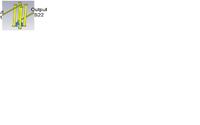Abhijith Yadav
Junior Member level 3
- Joined
- May 19, 2012
- Messages
- 28
- Helped
- 0
- Reputation
- 0
- Reaction score
- 0
- Trophy points
- 1,281
- Location
- Kozhikode, India
- Activity points
- 1,653
Hello people,
I am stuck with a small word i came across in Diptrace- 'vias'... Can anyone explain to me what exactly and where exactly a via comes into play? Also, for a design, I am forced to go for two layered etching... I am attaching the PDFs of both the layers... please tell me if there is any problem with the design work and also comment about its heat performance!
View attachment upload_usbasp_top.pdfView attachment upload_usbasp_bottom.pdf
I am stuck with a small word i came across in Diptrace- 'vias'... Can anyone explain to me what exactly and where exactly a via comes into play? Also, for a design, I am forced to go for two layered etching... I am attaching the PDFs of both the layers... please tell me if there is any problem with the design work and also comment about its heat performance!
View attachment upload_usbasp_top.pdfView attachment upload_usbasp_bottom.pdf
